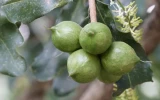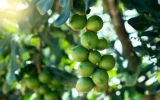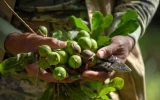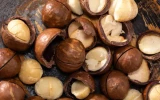How Often Do Macadamia Trees Fruit? (Season Chart)
While macadamia trees typically begin producing nuts at around 6–7 years old and reach maturity at around 10 years old, their frequency of fruiting can vary depending on factors such as climate, location, and growing conditions. In this article, we'll find out how often macadamia trees produce fruit using a chart depicting their fruiting season.
In warm climates like Hawaii, California, or Florida, macadamia trees usually produce fruit annually, aligning with the maturation of the nuts and the specific climate conditions of your area. However, if you live in a cooler climate, your macadamia tree may only produce fruit every other year or less frequently.
To ensure optimal fruit production, you need to provide your macadamia tree with the right growing conditions. Let's take a closer look at some of the optimal conditions to consider for fruit production.
Understanding the variations in cropping patterns would help set realistic production and revenue expectations when starting a macadamia orchard from scratch.
Summary
- Macadamia integrifolia and Macadamia ternifolia exhibit an annual frequency of fruit production, with the timing of fruiting aligning with the summer-to-autumn and spring-to-summer seasons, respectively.
- In contrast, Macadamia tetraphylla and Macadamia jansenii display a biennial frequency of fruit production, with their fruiting seasons occurring from autumn to winter and winter to spring, respectively.
- Macadamia trees in warm climates such as Hawaii, California, Florida, and South Africa exhibit an annual fruiting pattern, which is attributed to the favorable climate conditions in these regions.
- In some areas of Australia with temperate climates, the fruit-bearing pattern of macadamia trees may be more irregular, with alternating years of high and low yields.
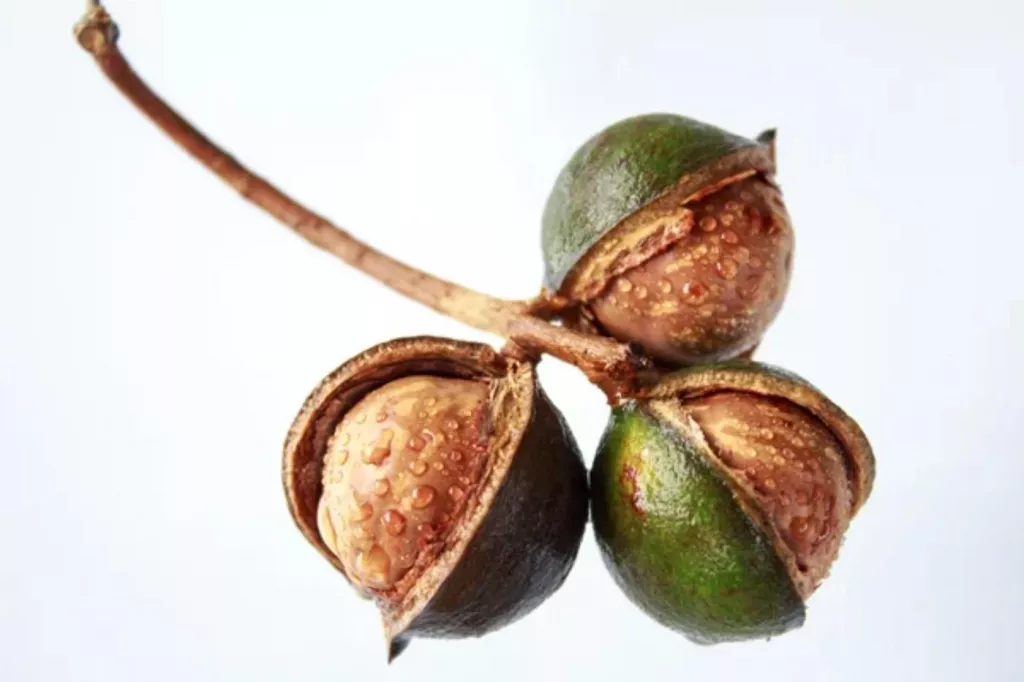
On this page:
Frequency of Fruit Production for Macadamia Species
The table below provides an overview of the frequency of fruit production, as well as the season of fruiting, for different species of macadamia.
| Macadamia Species | Season of Fruiting | Month of Fruit Production | Frequency of Fruit Production |
|---|---|---|---|
| Macadamia integrifolia | Summer to autumn | December-March | Annual |
| Macadamia tetraphylla | Autumn to winter | April-July | Biennial |
| Macadamia ternifolia | Spring to summer | September-December | Annual |
| Macadamia jansenii | Winter to spring | June-September | Biennial |
Macadamia integrifolia and Macadamia ternifolia produces fruit annually
Macadamia integrifolia, commonly known as the smooth-shelled macadamia, is a species of tree native to southeastern Queensland in Australia.
The season of fruiting for Macadamia integrifolia is typically from summer to autumn, with the main months of fruit production being December to March.
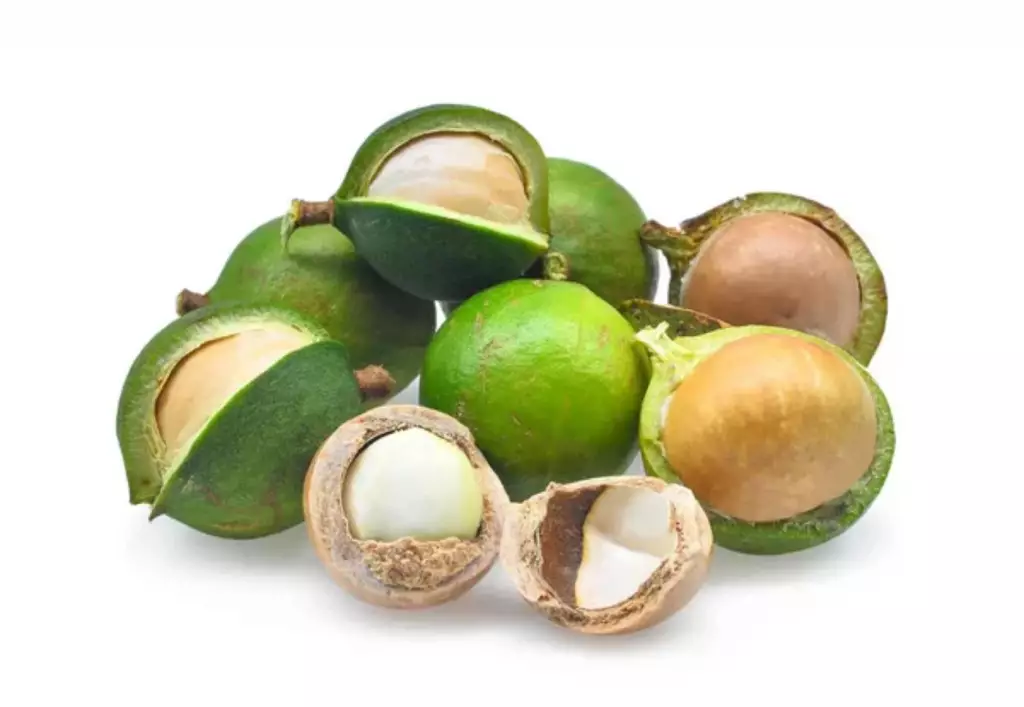
Meanwhile, the fruiting season for Macadamia ternifolia, also known as the Bauple nut, typically occurs from spring to summer, with the main months of fruit production being September to December.
Both Macadamia integrifolia and Macadamia ternifolia exhibit an annual frequency of fruit production.
The timing of fruit production is influenced by several factors, including environmental cues and the tree's reproductive cycle.
The summer to autumn season provides favorable conditions for the development and maturation of the fruit. The longer daylight hours and warmer temperatures during this period create an optimal environment for flowering and fruit in the macadamia trees.
Additionally, the annual frequency of fruit production aligns with their reproductive strategy. As perennial trees, they invest significant resources into fruit production each year to ensure the continuation of their species. By producing fruit annually, the trees maximize their chances of successful seed dispersal and propagation.
Furthermore, the timing of fruit production may also be influenced by the availability of pollinators and the synchronization of flowering and pollination.
The species may have evolved to fruit during the summer to autumn period to coincide with the activity of specific pollinators, thereby increasing the likelihood of successful pollination and fruit development.
Macadamia tetraphylla and Macadamia jansenii produces fruit biennially
Macadamia tetraphylla, also known as the rough-shelled macadamia, and Macadamia jansenii, a lesser-known species, follow a different pattern of fruit production compared to Macadamia integrifolia and Macadamia ternifolia.
The season of fruiting for Macadamia tetraphylla typically occurs from autumn to winter, with the main months of fruit production being April to July. For Macadamia jansenii, it typically occurs from winter to spring, from June to September. Both species exhibit a biennial frequency of fruit production.
Their fruiting season provides suitable conditions for the development and maturation of the fruit, with cooler temperatures and shorter daylight hours contributing to the initiation of flowering and fruit set in the macadamia trees.
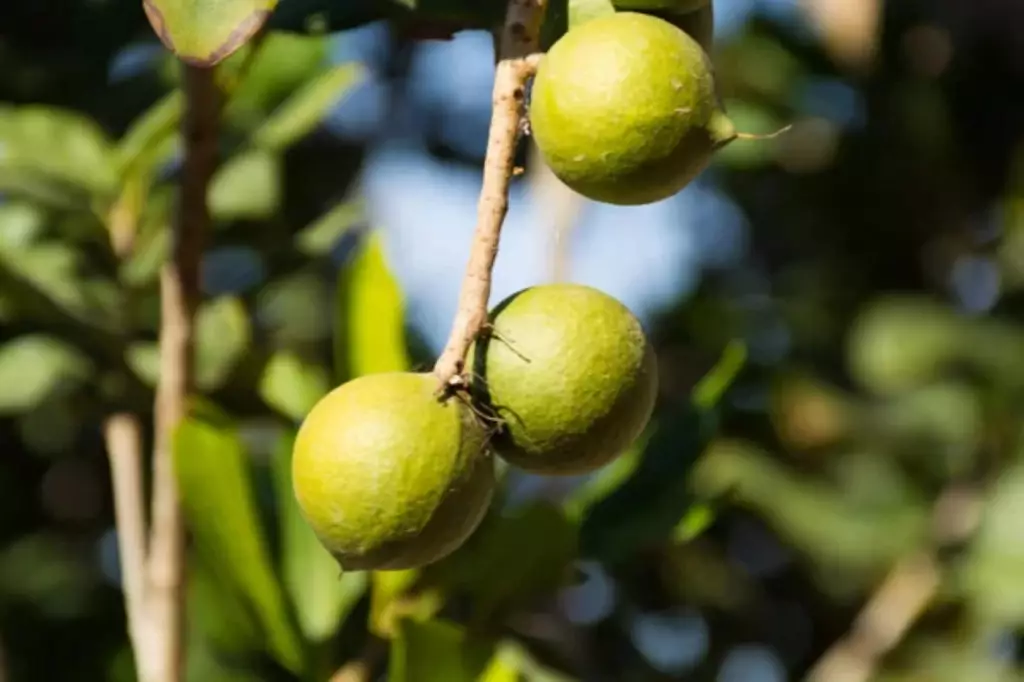
The biennial frequency pattern may be an adaptation to optimize resource allocation. By alternating between heavy fruiting years and lighter fruiting years, the species may be able to manage its energy reserves more efficiently, especially in environments with variable or limited resources.
Furthermore, the biennial fruiting pattern could be advantageous for ensuring a consistent supply of resources for seed development and dispersal, as well as for maintaining a balance between reproductive effort and tree growth.
To help you identify the different species of Macadamia trees, this article details their physical appearances and unique characteristics.
Regional Variations in Frequency of Macadamia Fruit Production
The table below presents how often macadamias produce fruit across different regions and climates:
| Region | Climate | Estimated Frequency of Macadamia Fruit Production |
|---|---|---|
| Hawaii | Warm | Annually |
| California | Mediterranean | Annually |
| Florida | Subtropical | Annually |
| Australia | Tropical/temperate | Annual/biennial |
| South Africa | Subtropical | Annually |
Macadamias fruit annually in regions with warm climate
Macadamia trees are well-known for their delicious and nutritious nuts, and their fruit production is influenced by the climate in which they are grown.
In warm climates such as Hawaii, California, Florida, and South Africa, macadamia trees typically produce fruit annually. If you're seeking to grow macadamia in Florida, here are some of the best varieties you can start to plant.
This regular fruiting pattern is due to the favorable climate conditions, which support the maturation of the nuts and provide the necessary environment for consistent fruit production.
The specific climate conditions in these warm regions, including adequate sunlight, warmth, and moisture, contribute to the annual fruiting cycle of macadamia trees.
These favorable conditions enable the trees to develop and ripen their fruit on a yearly basis, resulting in a reliable and consistent harvest of macadamia nuts.
Macadamias fruit every other year in regions with cooler climate
Australia's diverse climate plays a significant role in influencing the biennial-bearing pattern of macadamia trees. The country's climate varies widely, ranging from the tropical regions of Queensland to the temperate climates of New South Wales and Victoria.
In the tropical regions of Queensland, where the climate is characterized by high temperatures and humidity, macadamia trees experience a more consistent and prolonged growing season.
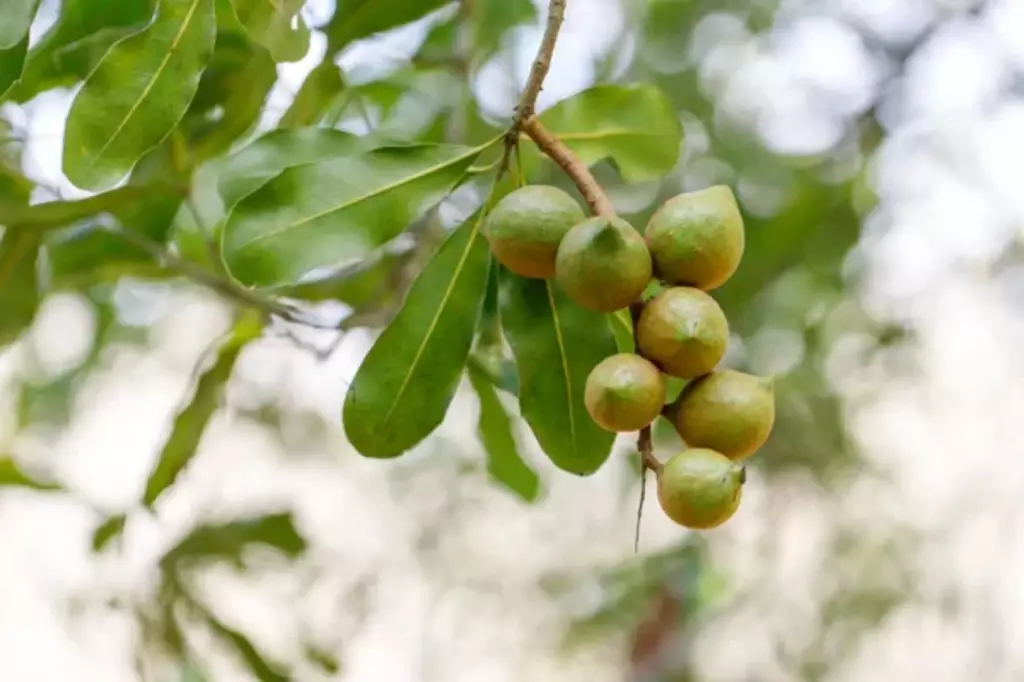
This can lead to a higher frequency of flowering and fruiting, resulting in a more regular bearing pattern. The consistent warmth and moisture in these regions create favorable conditions for continuous growth and production.
On the other hand, in the temperate climates of New South Wales and Victoria, the seasonal variations in temperature and the occurrence of distinct winter and summer seasons can influence the biennial-bearing pattern of macadamia trees.
The trees may experience periods of dormancy during the cooler months, affecting the timing and frequency of flowering and fruiting. This can lead to a more irregular bearing pattern, with alternating years of high and low yields.
The impact of Australia's diverse climate on the biennial-bearing pattern of macadamia trees is further compounded by factors such as soil conditions, water availability, and management practices.
Optimal Conditions for Fruit Production
In this section, we'll take a closer look at some of the optimal conditions you need to consider for a healthy macadamia fruit production:
Keep in mind the climatic factors
Macadamia trees thrive in warm, humid environments. They grow best in areas with temperatures between 60°F and 80°F. In the United States, Hawaii and California have the optimal climate for growing macadamia trees.
In Australia, Queensland and New South Wales are the main growing regions. In Africa, macadamia trees are mainly grown in the southeastern part of the continent. You can learn more about the ideal climate conditions for macadamia trees in this article.
Manage the soil and apply a balanced fertilizer
Macadamia trees require well-draining soil that is rich in nutrients. The soil should have a pH level between 5.5 and 6.5. If the soil is too acidic, add lime to raise the pH level.
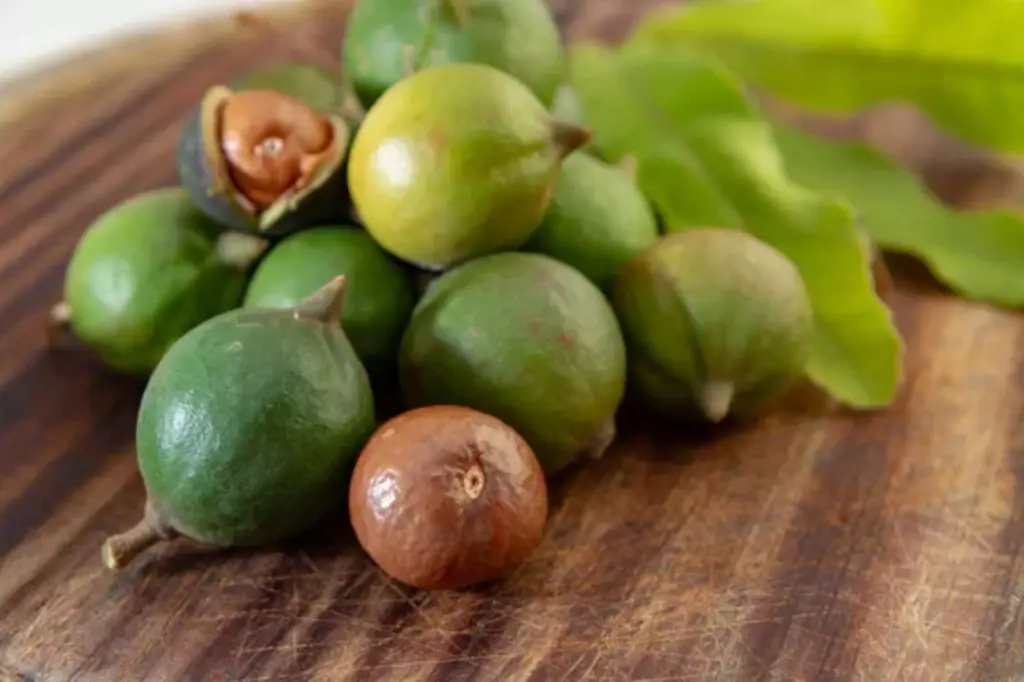
If the soil is too alkaline, add sulfur to lower the pH level. Fertilize the trees annually with low nitrogen, low phosphorus, and high potassium fertilizer once mature.
Take note of water and humidity levels
Macadamia trees require regular watering to produce a good crop of nuts. They need about 1 inch of water per week during the growing season.
If you live in an area with low rainfall, you may need to supplement with irrigation. Macadamia trees also require high humidity to grow well. If you live in a dry area, perhaps consider using a humidifier to increase the humidity around the tree.
